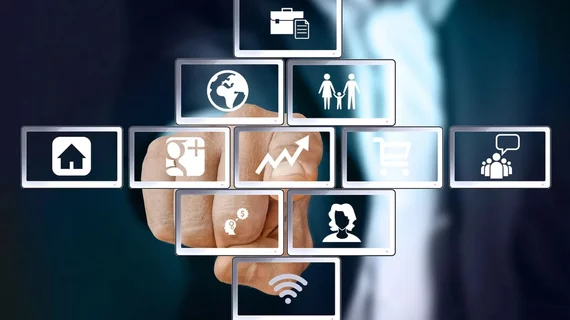Technology adoption in healthcare is at an all-time high, and the attractiveness of telehealth and other innovative solutions during the COVID-19 pandemic is likely to continue driving how healthcare is delivered through the next decade.
That’s according to a recent analysis from Frost & Sullivan predicting global healthcare revenues will jump from $2 trillion in 2019 to $2.6 trillion in 2025.
"The global healthcare industry is in the midst of a major shift, a process that was accelerated by the COVID-19 pandemic,” Siddharth Shah, healthcare program manager at Frost & Sullivan, said in a statement. “Mega Trends such as anytime, anywhere care and healthcare consumerism, as well as disruptive technologies like AI and the internet of things have converged to reshape the healthcare ecosystem.”
Other analyses of online trends suggest the same thing: Telehealth is booming and likely to stay. While telehealth has been around for decades, the COVID-19 pandemic has pushed technology adoption into overdrive. This is compounded by rising use of smartphones and the internet, further pushing healthcare organizations to ground service offerings in consumer preferences.
“Tech innovations and the change to virtual consultations are strengthening patients' roles in clinical decision-making, reshaping care delivery, and supporting industry growth,” Shah said. “They are expected to increase the focus toward consumer-centricity in offerings and approaches to patients, physicians and providers as customers. Innovative startups are realizing returns on this opportunity for primary care through physical, virtual, and eCommerce methods."
Healthcare organizations are also facing pressures from higher expenditures and greater need for efficiencies across healthcare systems operationally, clinically and financially. Further, an aging population with more chronic diseases and a shortage of skilled healthcare workers spells another pain point for healthcare organizations. To meet these challenges, the next decade from 2020 to 2030 is likely to experience a “considerable healthcare transformation,” according to Frost & Sullivan.
“The development, testing and piloting of new technology solutions will occur between 2020 and 2025, with adoption and transformation taking place from 2026 to 2030,” the analysis predicts.
The pandemic has also attracted new players to the healthcare technology space, with the information technology industry eyeing new opportunities to address healthcare inefficiencies. Over the next decade, Frost & Sullivan expects to see more new players and various healthcare technology applications.

